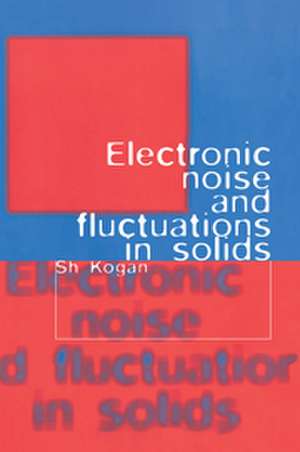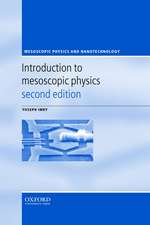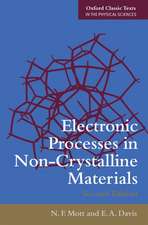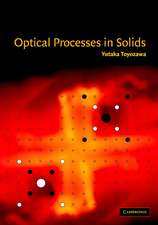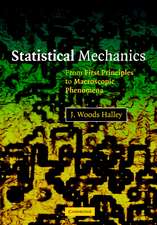Electronic Noise and Fluctuations in Solids
Autor Sh. Koganen Limba Engleză Paperback – 30 iul 2008
| Toate formatele și edițiile | Preț | Express |
|---|---|---|
| Paperback (1) | 444.55 lei 6-8 săpt. | |
| Cambridge University Press – 30 iul 2008 | 444.55 lei 6-8 săpt. | |
| Hardback (1) | 1006.88 lei 6-8 săpt. | |
| Cambridge University Press – 14 aug 1996 | 1006.88 lei 6-8 săpt. |
Preț: 444.55 lei
Nou
85.06€ • 92.69$ • 71.68£
Carte tipărită la comandă
Livrare economică 23 aprilie-07 mai
Specificații
ISBN-10: 0521070198
Pagini: 376
Ilustrații: 68 b/w illus. 4 tables
Dimensiuni: 170 x 244 x 20 mm
Greutate: 0.6 kg
Editura: Cambridge University Press
Colecția Cambridge University Press
Locul publicării:Cambridge, United Kingdom
Cuprins
Recenzii
Descriere
This book is devoted to the physics of electronic fluctuations (noise) in solids and covers almost all important examples of this phenomenon. It is comprehensive, intelligible and well illustrated. Emphasis is given to the main concepts, supported by many fundamental experiments which have become classics, to physical mechanisms of fluctuations, and to conclusions on the nature and magnitude of noise.
The book also includes a comprehensive and complete review of flicker (1/f) noise in the literature. It will be useful to graduate students and researchers in physics and electronic engineering, and especially those carrying out research in the fields of noise phenomena and highly sensitive electronic devices, for example radiation detectors, electronic devices for low-noise amplifiers and quantum magnetometers (SQUIDS).
